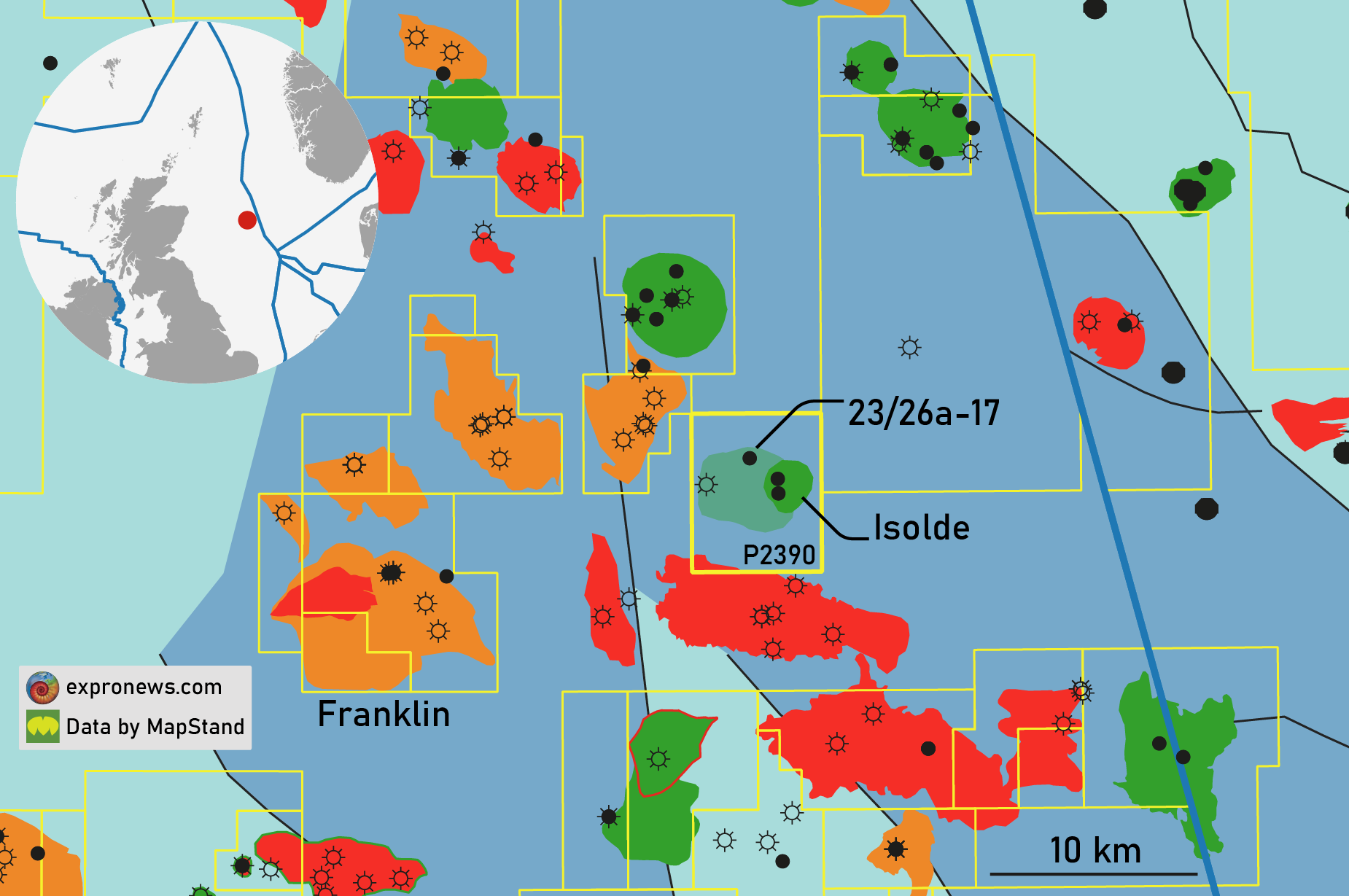In a report published by Offshore Energies UK yesterday, the organisation representing the integrated offshore energy industry states that for the first time gas imports from Norway have exceeded domestic gas production (32 Bcm imported versus 29 Bcm produced domestically).
At the same time, domestic oil production has also fallen significantly, with a 17% year-on-year decline since 2019. Lower investment and a number of significant outages last year are the main reasons for this.
Is there a way to arrest the decline in domestic production?
There is, and one of these is to drill prospects that are ready to be tested. One of those is the overlooked Isolde prospect in the Central North Sea.
Secured during the UKCS 30th Licensing Round, Soliton Resources was awarded licence P2390 in blocks 23/26e and 30/1d in 2018. Equinor subsequently farmed in in 2019, with Soliton retaining a 15% interest.
Isolde is an example of a salt-flank prospect in Chalk and Paleocene sandstones that has suffered from poor quality seismic at the time it was initially drilled in 1992 by well 23/26-17. Because the well only found residual oil saturations, it was plugged and abandoned. However, later work on similar trap settings has shown that these salt-flank prospects are often characterised by a retreated hydrocarbon column due to limited trap leakage.

So, rather than being discouraged by the existence of a potential paleo-water contact, exploration results in the main part of the Central North Sea have in fact proven that the salt diapir flank trap type is highly successful, with hydrocarbon column heights of around 900 m and average recoverable reserves of around 100 MMboe.
Following new 3D seismic data acquisition after licence award, the Isolde prospect now more confidently suggests that around 1000 m of untested relief is present from where the 23/26-17 was drilled up to the crest of the accumulation. According to Graham Goffey from Soliton Resources that leaves Isolde in the same volume range as similar fields in the area, with an anticipated 100 MMboe of recoverable resources.
As of now, it seems that Equinor is looking for a third partner in the licence. Once successful, this exciting prospect is ready to be tested.
HENK KOMBRINK





